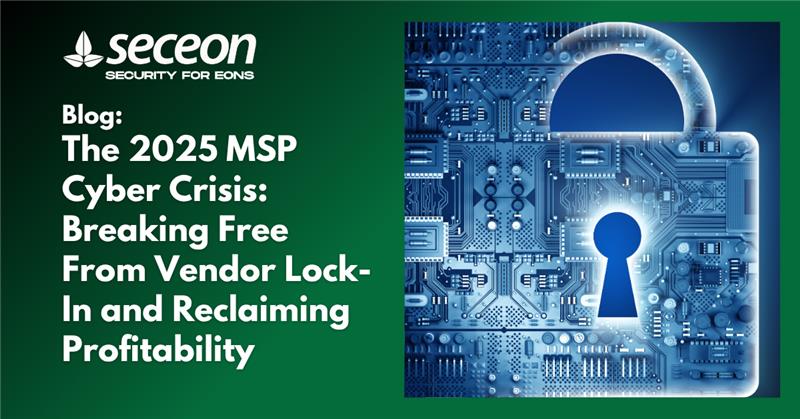
The global MSP ecosystem has entered its most challenging era.
As businesses accelerate cloud adoption, hybrid work, and continuous digital operations, MSPs have become essential security partners. Yet despite market growth, the sector is undergoing severe margin compression, operational overload, and unprecedented pressure from escalating threats.
Tool sprawl, rising licensing costs, and growing alert fatigue have pushed MSPs into a dangerous position.
With average tool stacks now reaching 76 security products and operating margins dropping to 15 to 25 percent, 2025 is exposing a critical truth:
Fragmented, multi-tool security strategies can no longer support MSP profitability, agility, or long-term resilience.
📌 Read the full whitepaper here:
https://info.seceon.com/breaking-free-from-vendor-lock-in#SecOT
MSPs today operate across increasingly complex environments:
Despite this complexity, most MSPs still rely on dozens of disconnected tools. This creates massive operational inefficiencies, limited threat correlation, and thousands of noisy alerts every day.
The result is:
Attackers exploit this fragmentation instantly.
A single misconfigured API, unmonitored identity event, or unpatched endpoint becomes an entry point for lateral movement within minutes.
To achieve real resilience, MSPs must shift from fragmented tools to a unified, AI-powered platform capable of real-time detection, automated response, and continuous compliance.

The whitepaper highlights how AI native, fully unified security platforms are transforming the MSP business model by eliminating tool sprawl and centralizing visibility across all customer environments.
A unified AI platform enables MSPs to:
Instead of juggling dozens of tools, MSPs are adopting single fabric security architectures capable of correlating billions of events, identifying behavioral anomalies, and executing autonomous response actions within seconds.
This shift is redefining how MSPs protect clients and scale profitably.
MSPs must secure a wide variety of environments:
Legacy tools were never designed for this scale and diversity. Many require proprietary configurations, one off integrations, or long certification cycles, creating dependence and lock in.
The whitepaper emphasizes the role of AI driven platforms that extend visibility across every customer tenant and every security layer using:
By unifying event ingestion and analysis, MSPs can finally prevent attacks from spreading across tenants or exploiting siloed tools.
Compliance workloads have exploded with:
The whitepaper outlines how compliance now consumes 10 to 15 percent of billable MSP hours.
AI powered compliance frameworks such as Seceon aiCompliance CMX360 enable:

This reduces manual work, eliminates spreadsheet dependency, and strengthens security governance for every MSP client.
MSPs shifting to unified AI defense models report dramatic improvements in cost, detection speed, and analyst productivity.
| Metric | Before Unified AI Defense | After Unified AI Defense | Improvement |
| Detection Time | Hours to days | Real time minutes | 90 to 99 percent faster |
| Response Time | Hours to days | Seconds to minutes | Up to 98 percent faster |
| Tool Cost | High multi vendor spend | Consolidated | 60 to 75 percent savings |
| Analyst Overhead | Constant tool switching | Streamlined workflows | Major reduction |
MSPs also report:

The whitepaper highlights real world scenarios where MSPs suffered operational and financial damage due to fragmentation:
In each case, unified AI powered architecture would have detected the threat earlier, automated containment, and protected the MSP’s margins.
These lessons are reshaping the MSP landscape in 2025 and beyond.
With rising threat sophistication and tighter compliance demands, MSPs are moving rapidly toward:
The outcome is transformational:
This evolution is not just a technology shift; it is a business survival imperative.
The 2025 Vendor Lock-In Crisis makes one thing clear:
Fragmented tools cannot support the future of managed security.
Unified, AI-driven platforms enable MSPs to:
MSPs now face a decisive moment, one that will define their business model for the next decade.
